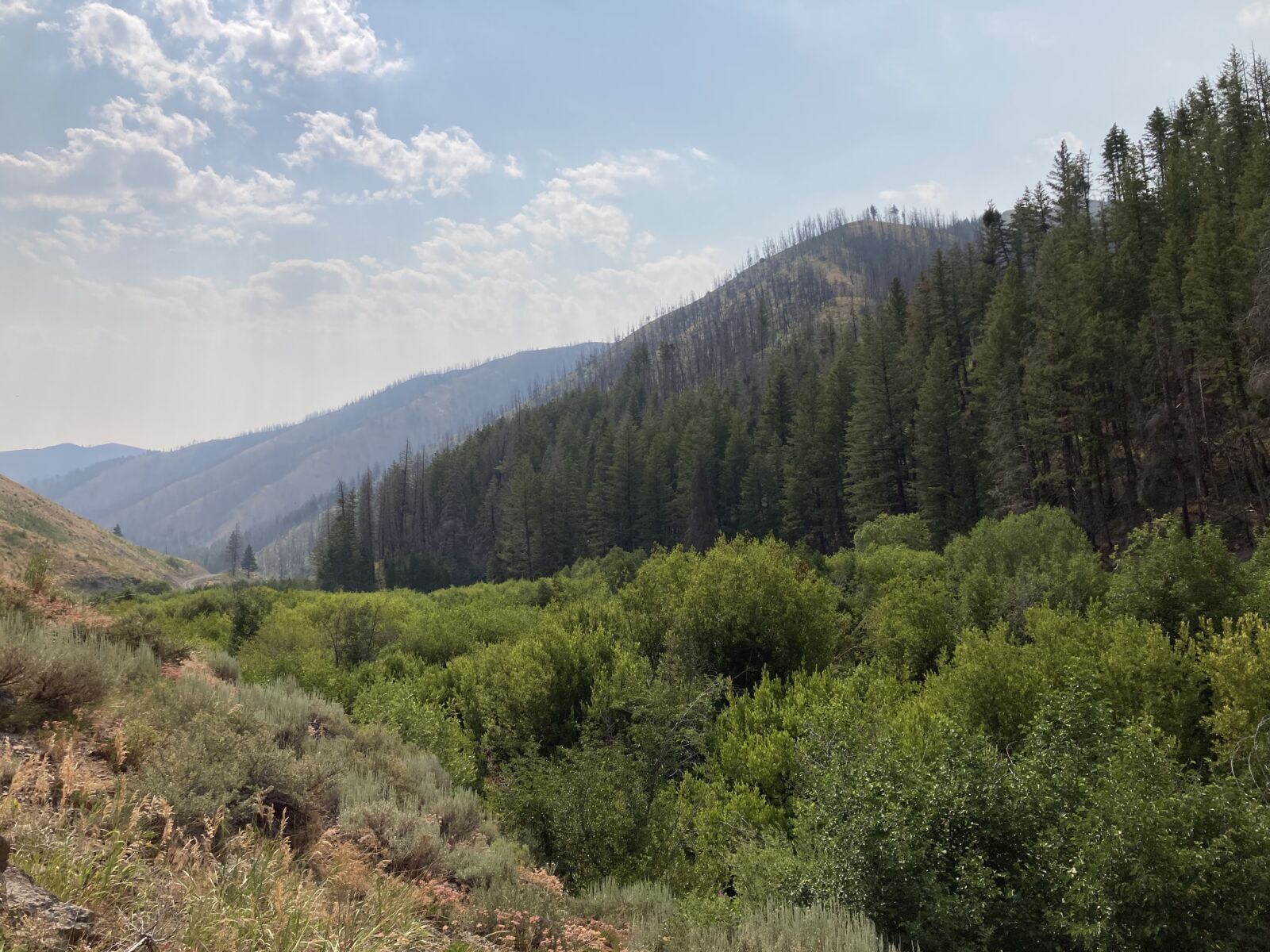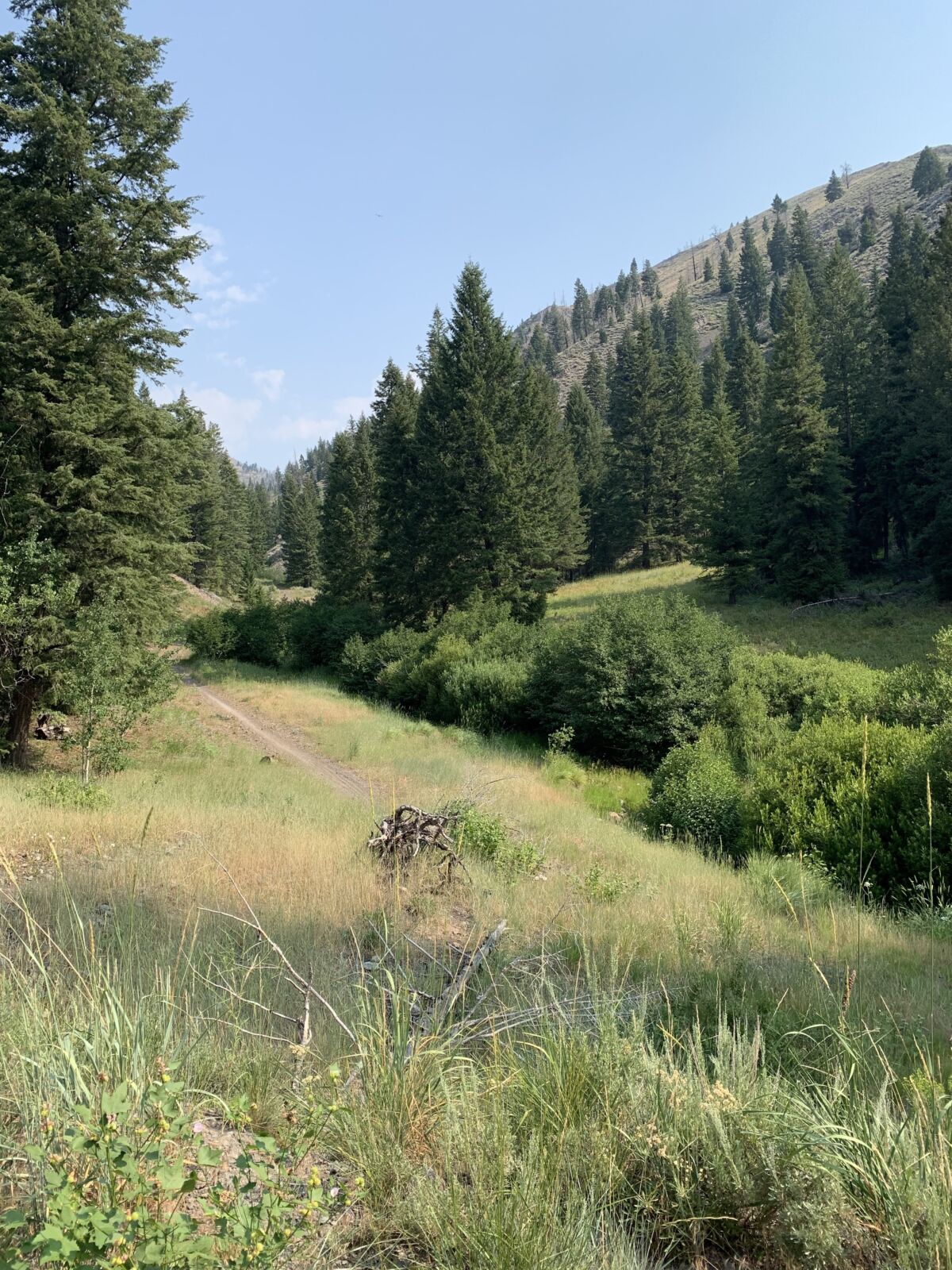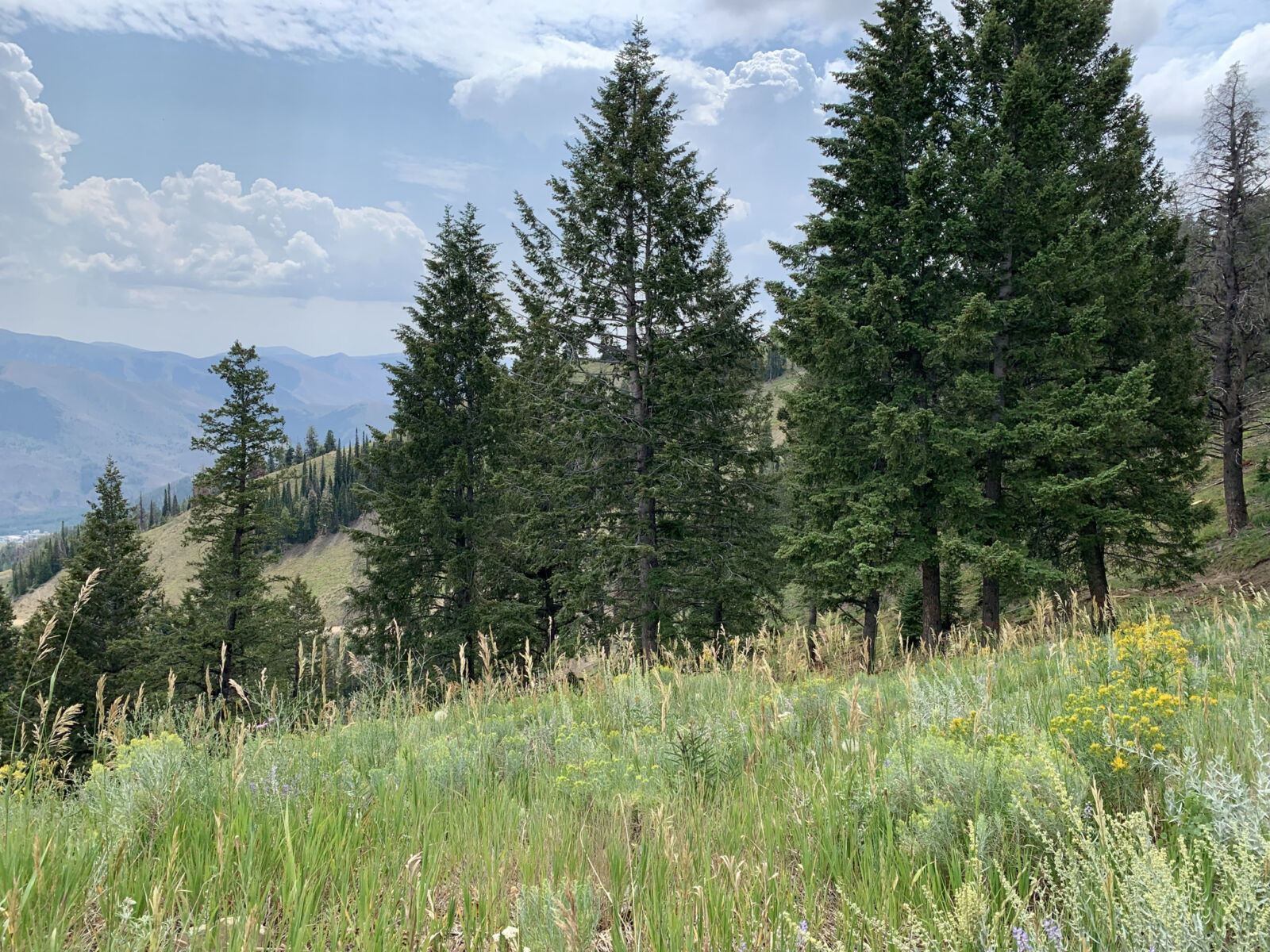Southern Idaho’s forests experience a multitude of stressors, such as wildfire, insects, and disease, which make them less healthy and resilient. Reforestation is a way to enhance the forests we all rely on, but it is not as simple as just dropping a tree in the ground. Our National Forests are facing challenges.
This summer (2021), Forest Service personnel on the Boise, Caribou-Targhee, Salmon-Challis, and Sawtooth National Forests were interviewed to better understand the challenges their forests face. Questions were posed on topics ranging from seed collection to tree planting and funding.

Deer Creek Restoration with Burned Area Behind
Each Forest has its own unique circumstances and needs; some are much farther along in the reforestation process than others. Due to recent large megafires, the Boise National Forest has an active reforestation program that plants 2500 acres per year on average. On the other hand, the Salmon-Challis National Forest has high planting need but went years without a silviculturist and is now trying to build a reforestation program from the ground up. They hope to begin planting in the next couple years.

Deer Creek Trail.
Before planting can occur, under normal circumstances, the following must happen: environmental analyses and surveys must be completed to identify need (sometimes natural regeneration is the best option) and meet the requirements of the National Environmental Policy Act (NEPA), requests must be submitted to the regional Forest Service nursery, seedlings must be grown from previously collected seeds, contract planting crews must be hired, and sites need to be prepared for planting. Care must be taken to use plant material in restorations obtained from similar climatic zones and sourced as locally as possible. Once planted, trees need to be monitored after 1, 3, and 5 years. Invasive species must be controlled.

Bald Mountain.
This all takes time and staff, two things all respondents mentioned lacking. The capacity to complete NEPA analyses is virtually nonexistent at some Forests due to understaffing and is the main barrier to restoration. Seed inventories are low at every Forest. Whitebark pine is the hardest seed to source, largely due to the fact whitebark pine seed needs to be at least 25% resistant to a disease called whitebark pine blister rust and because the species seeds unpredictably and rarely. Another common challenge across the Forests is the lack of funding for contract crews.
These hurdles are daunting but not insurmountable. The National Forest Foundation is working to create a Southern Idaho Forest Fund with the goal of increasing restoration and reforestation while alleviating some of the strains on Forest Service personnel and creating jobs in southern Idaho communities.

